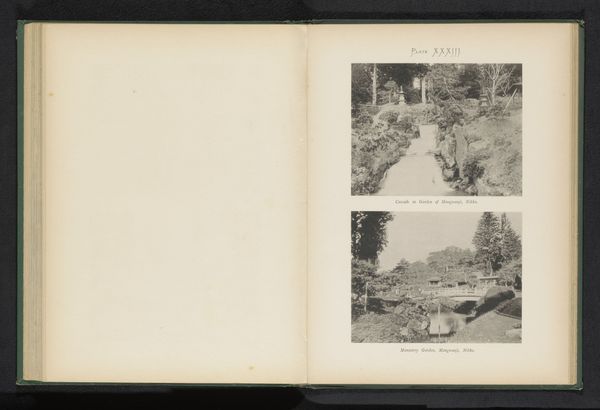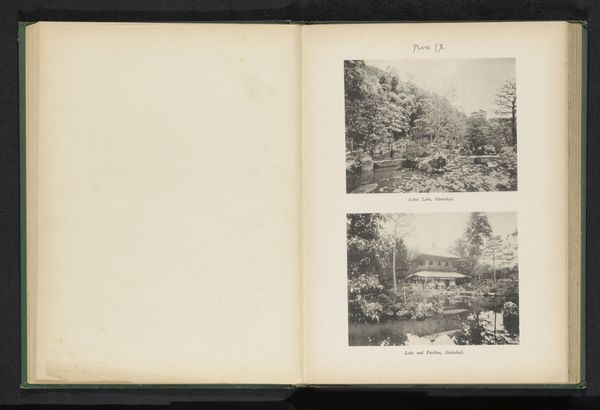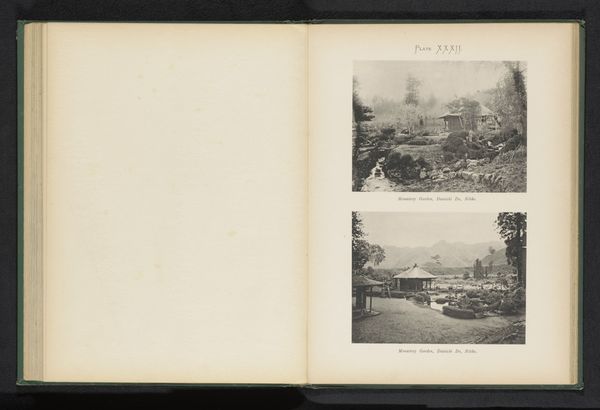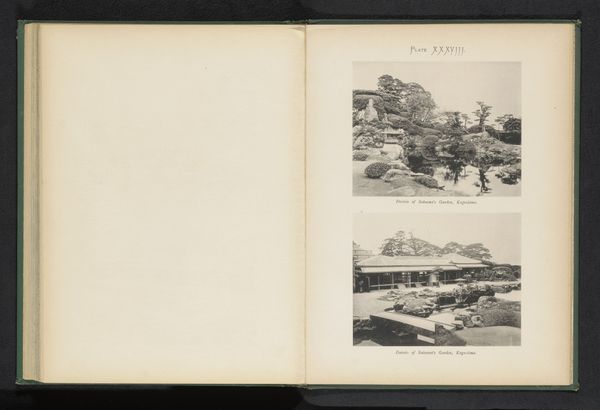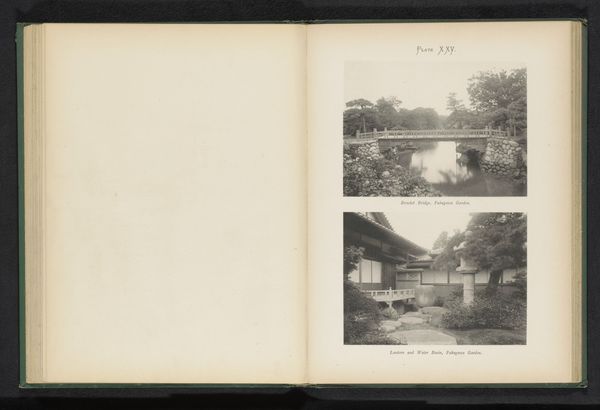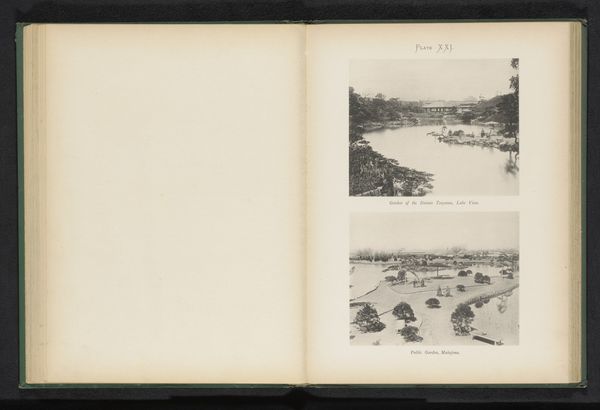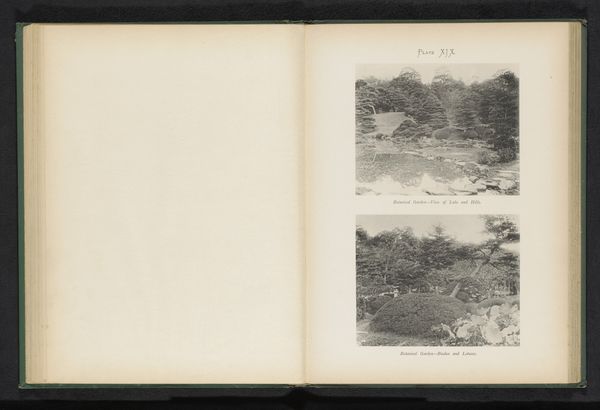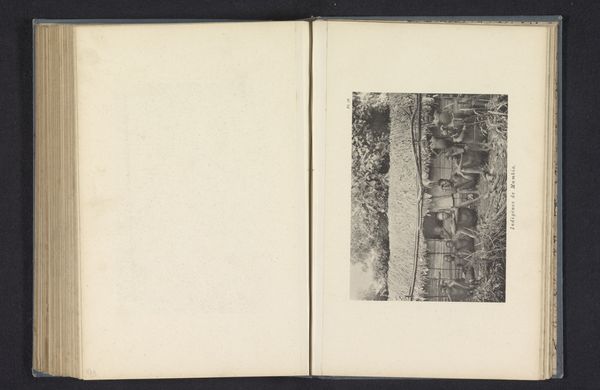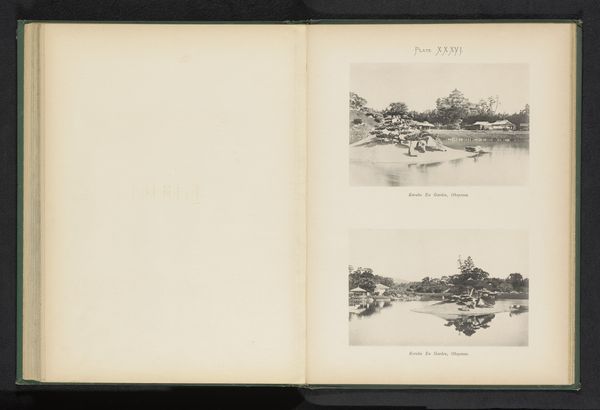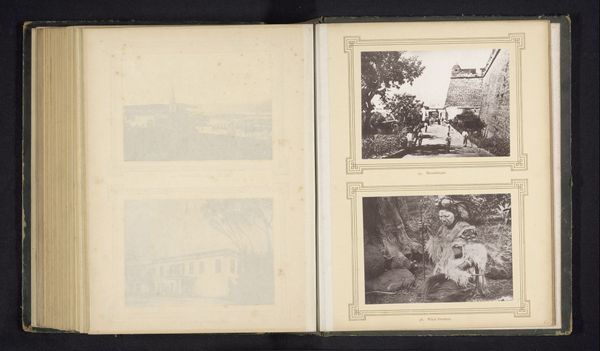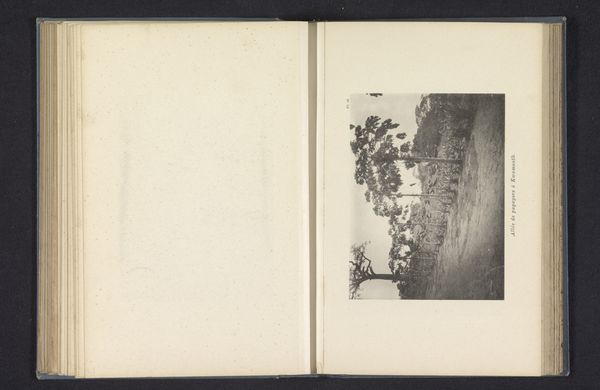
Gezicht op de Sotetsu tuinen in Kyoto en een gezicht op een tuin van een handelaar in Aomori, Japan before 1893
0:00
0:00
photography, gelatin-silver-print
#
asian-art
#
landscape
#
photography
#
gelatin-silver-print
Dimensions: height 356 mm, width 258 mm
Copyright: Rijks Museum: Open Domain
Editor: So, here we have two gelatin-silver prints by Kazumasa Ogawa, taken before 1893, titled "Gezicht op de Sotetsu tuinen in Kyoto en een gezicht op een tuin van een handelaar in Aomori, Japan". The juxtaposition of the two gardens makes me think about the different scales of commerce and leisure. What's your take on this image? Curator: From a materialist perspective, these prints offer a fascinating glimpse into the commodification of Japanese aesthetics for a Western audience. Ogawa, a pioneer of photography in Japan, skillfully reproduced garden views, essentially packaging them for consumption. The gelatin-silver process itself – consider its industrial origins – facilitated mass production, turning these carefully cultivated spaces into easily distributable objects. Doesn’t it make you think about how labor is involved in both creating these gardens and then reproducing their image? Editor: Definitely. I hadn't considered the mass production aspect so directly. It feels a bit contradictory; the gardens are so carefully manicured and serene, but the prints become almost…disposable commodities. Curator: Exactly. And what about the act of photography itself? Consider the photographer's role in shaping perception. Ogawa isn’t simply documenting, he is actively constructing a vision of Japan for an audience hungry for exotic imagery, participating in and perpetuating Japonisme and, dare I say, Orientalism. How much does that perspective impact our reading of these prints? Editor: It does change things. Knowing these images might have been used to promote a certain Western fantasy makes me question their authenticity. The composition now seems less about nature and more about cultural presentation. Curator: Precisely. It’s about the power dynamics inherent in image production and circulation. It's no longer just gardens, it's gardens shaped for specific cultural consumption. What did you glean from our talk? Editor: I now view the photograph less as a simple representation and more as a product, shaped by its materials, production, and cultural context, opening new ways of examining not just *what* is depicted, but *how* and *why*.
Comments
No comments
Be the first to comment and join the conversation on the ultimate creative platform.
